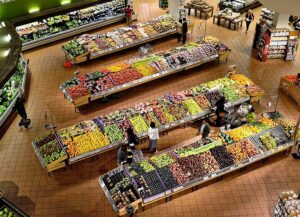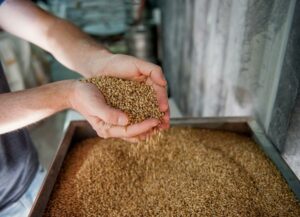Fernando Díaz
Selenium is an essential trace mineral that is an indispensable component of the antioxidant system. Selenium is an essential element of antioxidant enzymes such as glutathione peroxidase, and its deficiency may result in an imbalance of redox homeostasis and ultimately oxidative stress.
Since selenium content in plants is highly variable, selenium is normally supplemented in dairy cow diets using inorganic sources (sodium selenite, sodium selenate), organic sources (selenium yeast, hydroxy-selenomethionine) or a combination of both. Ruminal metabolism and intestinal absorption of these selenium compounds differ as well as their antioxidant capacity.
A recent study conducted at the State Key Laboratory of Animal Nutrition, Changping Experimental Base (Beijing, China) investigated the effects of selenium form on antioxidant capacity and production performance of dairy cows during heat stress. Cows were individually housed in environmental chambers and maintained at different climate conditions. First, cows were housed at thermoneutral conditions during 28 days [20°C, 55% humidity; temperature-humidity index (THI) = 66.9], and later cows were exposed to cyclical heat stress conditions during 9 days (32 -36°C, 40% humidity; THI = 82.6–84.3).
Cows were fed a corn-silage based diet containing 0.04 mg of selenium per kg of dry matter (DM) top-dressed with either sodium selenite or hydroxy-selenomethionine at 0.3 mg of selenium/kg of DM. Cows received ~6.0 mg of selenium/day during thermoneutral conditions. During the heat stress period; however, cows received less selenium (~3.8 mg day) because of a reduction in DM intake.
As expected, during heat stress DM intake and milk yield were decreased by 34.9 and 31.8%, respectively. Comparing selenium sources during heat stress, the authors (Sun et al., 2019) reported:
- Selenium source did not affect respiratory rate (74.9 beats per minutes) and rectal temperature (39.7°C).
- Selenium concentrations in serum (128 vs. 102 µg/L) and milk (51.2 vs. 29.9 µg/L) were higher in hydroxy-selenomethionine fed cows compared with cows fed sodium selenite. Nevertheless, based on serum selenium concentration, cows in the two diets were in an adequate selenium status (80 to 160 μg/L).
- Total antioxidant capacity was increased by 20% in cows receiving organic selenium. Interestingly, as heat stress progressed glutathione peroxidase activity was maintained in cows supplemented with organic selenium but it decreased in cows fed inorganic selenium.
- Despite of greater antioxidant capacity observed in cows fed organic selenium, production performance and feed intake were not affected by selenium source. On average, cows produced daily 21.8 kg of energy-corrected-milk, 0.79 kg of milk fat, and 0.65 kg of milk protein.
In conclusion, feeding the organic selenium source hydroxy-selenomethionine during heat-stress periods improves the antioxidant capacity and selenium blood levels in supplemented cows. More research is needed to evaluate whether this strategy is effective to improve lactation performance of high-production cows.
Reference
L. L. Sun, S. T. Gao, K. Wang, J. C. Xu, M. V. Sanz-Fernandez, L. H. Baumgard, and D. P. Bu. 2019. Effects of source on bioavailability of selenium, antioxidant status, and performance in lactating dairy cows during oxidative stress-inducing conditions. J. Dairy Sci. 102:311–319.











